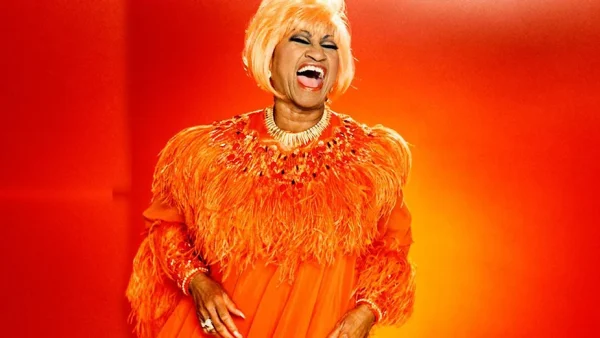Celia Cruz’s Return to Cuba and other Enduring Symbols

HAVANA TIMES – Her voice, an inextinguishable torrent, still trembles with that song: “Por si acaso no regreso/ Yo me llevo tu bandera/ Lamentando que mis ojos/ Liberada no te vieran” (If I don’t make it back, I’ll take your flag, Sad that my eyes, won’t see you when I’m free). Her eyes closed for good twenty years ago and no, they never saw her beloved island again. She had defied the Almighty Chief and he never forgave her; he didn’t even let her come back to bid farewell and bury her mother.
But as there’s nothing more healing than time, to set the stones back in their place, Celia Caridad Cruz Alfonso will return to Cuba. From August 2024 onwards, when she begins to retrace streets in the US on a 25 cent coin – at least 500 million copies will be minted-, it’s expected that thousands of Cubans will carry her in their pockets and take her back to the land that belongs to her, where her music – which is still banned – continues to move people and make them happy.
So, her laughing face and the Cuban word that was her war cry “Azucar!”, printed on the coin, will begin to cross over through Cuban Customs and unite Cubans on both sides of the Florida Strait with music and irreverence. A sweet invasion which State Security won’t have enough bitterness to counteract.
At this stage, something another Cuban singer announced, that our day “is coming” is beginning to become reality. It doesn’t even matter that it’s taken decades for this prophecy to come true. A prophecy that has been shared day and night, as emotional consolation, by many. As we know, this has a huge emblematic power.
Willy Chirino’s music isn’t played on the radio in Cuba or on supposedly public TV, but everyone, from great-grandparents to teenagers, know who he is and can hum his songs. The guajiro who went with a hummingbird, a book by Marti, a palm leaf and a hut and he has succeeded in his life as an immigrant with leaps and bounds. So much so, that there is a street in West New York, in New Jersey, named after him, since December 2022. Just a few meters away from this road, a monument has been erected in honor of political prisoners and a bust of Cuba’s National Hero.
Jose Julian, a fine man, also left knowing that he would die “without the Homeland”, but he decided that at least he wouldn’t “have an owner.” A similar certainty echoes in the many voices that have been shouting “Patria y Vida” (Homeland and Life), the lyrics and beat that have been gunpowder in protests, since 2021. One of the song’s authors Maykel “Osorbo“, is sadly rotting away in one of the Government’s packed prisons.
Cuban boxer Robeisy El tren Ramirez entered the ring in Tokyo’s Ariake Arena a few weeks ago, singing Patria y Vida, after the diplomatic arm of the ruling monopoly prohibited him from going out singing the national anthem and wearing the Cuban flag on his shorts. But the featherweight, a two-time Olympic champion, was more composed and patriotic than those that tried to destabilize him. He didn’t accept the US anthem as his own. He won the fight with a technical knockout and held onto the World Boxing Organization (WBO) belt against the Japanese boxer Satoshi Shimizu. After the victory, he recited the war anthem that heated things up in Bayamo.
Recently, Leinier Dominguez, the best chess player born in Cuba after Jose Raul Capablanca, has made history by becoming one of the top eight in the world at the World Cup in Baku, Azerbaijan. The propaganda apparatus that once pampered him as “the idol from Güines” seems to have forgotten his birthplace. But amateurs on the island continue to revere him as a role model. They look up his moves, comment on his games, want to be like him, they idolize him.
Meanwhile, literature fans everywhere are looking for and sharing Reinaldo Arenas’ writing here, there and everywhere. His name was recently printed on a plate collection that was put on display in the famous Tiffany & Co, store in New York. Designed by US painter and film director Julian Schnabel, the collection went on sale for $7,000 USD a set and has been a great success.
Celia, Willy, Maykel, Robeisy, Lenier, Reinaldo… Symbols.
Symbols that no totalitarian apparatus can banish from the essence of their nation and people. Azucar!!!






Celia Cruz – great singer – great salsera – no doubt at all.
Legend.
But one question that this admirably effusive article neglects to ask is this:
Did Celia Cruz in fact become a member of the Cuban Communist Party several years before it’s future leader, Fidel Castro, finally signed up???
Historical facts could be dull if they were not sugared by irony.